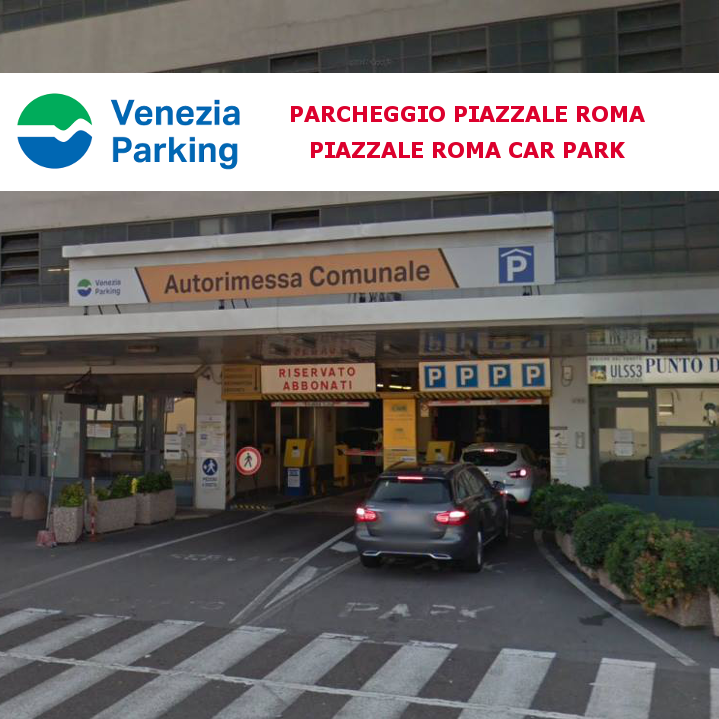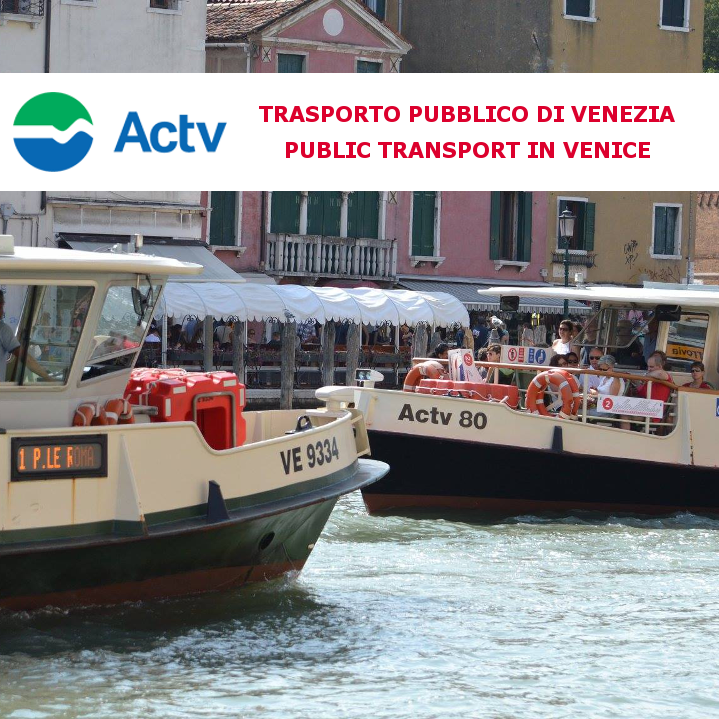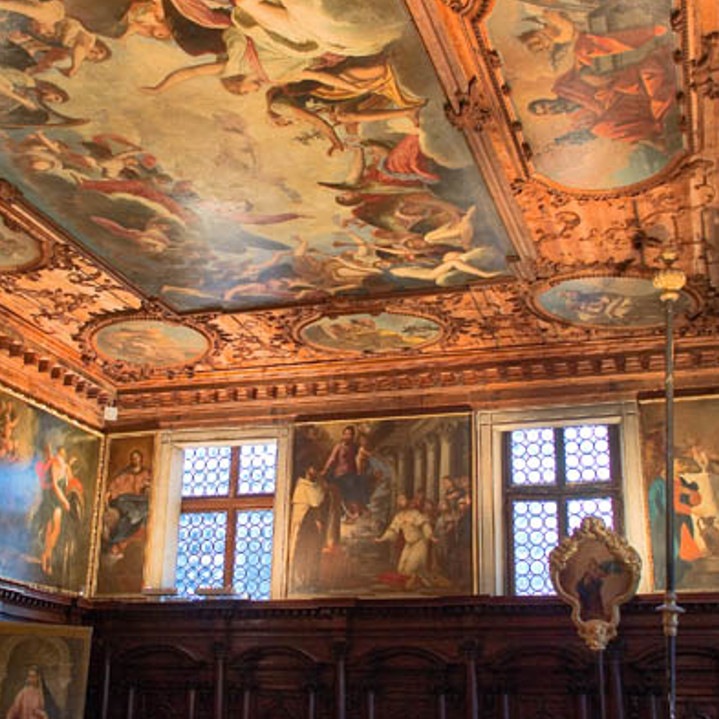You are here
Seaside villages, beaches and green oases; cycling along the Venetian coast
Seaside villages, beaches and green oases; cycling along the Venetian coast
On one side is the lagoon, on the other the sea. In the middle are two thin strips of land, the Lido of Venice and Pellestrina. These islands are at their best when viewed by bicycle. From March to October, they are the perfect setting for a slow itinerary to discover villages rich in history, wild nature, popular traditions and authentic flavors.
Pedaling along the two islands’ more than 20 kilometers of coastline, you can explore unique corners of the lagoon south of Venice at the right pace, from the Lido’s luxurious avenues to the authentic fishing villages on the island of Pellestrina, where everything invites visitors to relax.
Getting to the Lido is not difficult. The island can be reached by vaporetto from Venice or by ferry from Tronchetto and Punta Sabbioni (in this case, you can also bring your own bicycle on board).
Once landed, you immediately find yourself pedaling between elegant villas and imposing Art Nouveau hotels, testifying to the Lido beaches’ reputation for more than a century as an international elite tourism destination. As soon as you reach the seafront, you pass through the famous locations of the Mostra del Cinema, the oldest film festival in the world, and continue for a handful of kilometers to the ancient village of Malamocco, where time seems to have stopped.
Continue south along the road alongside the lagoon up to the WWF naturalistic oasis in Alberoni. From here, you may embark on the ferry for Pellestrina, a perfect island for those seeking simplicity and contact with nature and the locals.
After passing through the small, inhabited centers that dot the island, proceed to the coast’s southernmost stretch, occupied by the Ca' Roman nature reserve, 40 hectares of beach, dunes and pine forest, the last stop on the outward journey.
For the return, the itinerary is retraced back to the starting point. Alternatively, you can start the journey from the south, reaching the island of Pellestrina from Chioggia with a 25-minute motorboat crossing. In summer, even from Fusina motorboats leave for Pellestrina and Lido Alberoni, on which it is possible to transport the bicycle.
Back in 2017, the City of Venice launched the #EnjoyRespectVenezia awareness campaign to promote sustainable tourism. Please ensure that you always behave responsibly and respectfully towards the city, taking particular note of the following:
- Only purchase goods from authorised retailers
- Use licensed tour guides.
- Duration: about 8 hours
- Length: 45km (22.5km one way + 22.5km return)
-
Transportation: The itinerary takes place by bicycle and on foot in the inhabited centers’ pedestrian areas and in the stretch that leads to the Ca' Roman nature reserve. Here, it is forbidden to ride on two wheels and bicycles must be carried by hand. The tour of the two islands includes sections of cycle path, others of pavement and others where you can cycle along the road without difficulty.
Those who don't have a bicycle can rent one at the Lido. Various rental businesses (including electric bicycles) offer daily rates. Some are located near Piazzale Santa Maria Elisabetta and in the adjacent via Isola di Cerigo and via Perasto.
If you decide to use one of the bicycles from the public bike sharing service, keep in mind that you can only use it on the Lido island; the service is not active in Pellestrina.
Those who instead want to get to the Venice Lido with their own bicycle can do so on board the ferry of the ACTV line No.17, which arrives in the Riviera San Nicolò. From here, you reach Piazzale Santa Maria Elisabetta (the itinerary’s starting point) by proceeding south along the lagoon for about a kilometer, following the signs for the Venice Islands cycle route E No.5. - Recommended period: Spring - Autumn. It is not advisable to ride the cycle route on days when the lagoon is frequented by high flows of visitors and in particular on the hottest summer days, as the route includes sunny stretches.
- Accessibility Children: Yes
- Disabled guests: No
- Departure: Piazzale Santa Maria Elisabetta
- Arrival: Ca' Roman nature reserve
-
Public transportation:
From the Venice Santa Lucia train station (Ferrovia) and from Piazzale Roma on the Lido:
- ACTV Line 1: Piazzale Roma - Lido Santa Maria Elisabetta, duration approximately one hour
- ACTV Line 5.1: Railway - Lido Santa Maria Elisabetta, duration approximately 35 minutes
- ACTV Line 5.2: Piazzale Roma - Lido Santa Maria Elisabetta, duration approximately 50 minutes
From Piazza San Marco to the Lido:
- ACTV Line 14: San Marco/San Zaccaria – Lido Santa Maria Elisabetta, duration approximately 15 minutes
From Lido to Pellestrina:
- Line 11 ACTV ferry: Alberoni Faro Rocchetta - Santa Maria del Mare, duration 10 minutes -
Public transportation ticket rates:
Ticket rates for ACTV public transportation
Rates and methods of purchasing tickets for the ACTV ferry.
Bringing the bicycle on board the ferry costs 1 euro in addition to the rider’s ticket price. Payment can also be made on board.
Ticket rates for ACTV line 11 (water vehicle + bus + ferry)
To be updated on any changes in the price of ACTV public transportation tickets, we advise you to visit the veneziaunica portal
Ticket rates for Terminal Fusina shipping lines
If you need to return the bicycle to the rental service on the Lido, the last useful ferry ride from Santa Maria del Mare to Alberoni Faro Rocchetta is at 6.45 pm. We advise you to always check the timetables on the ACTV website.
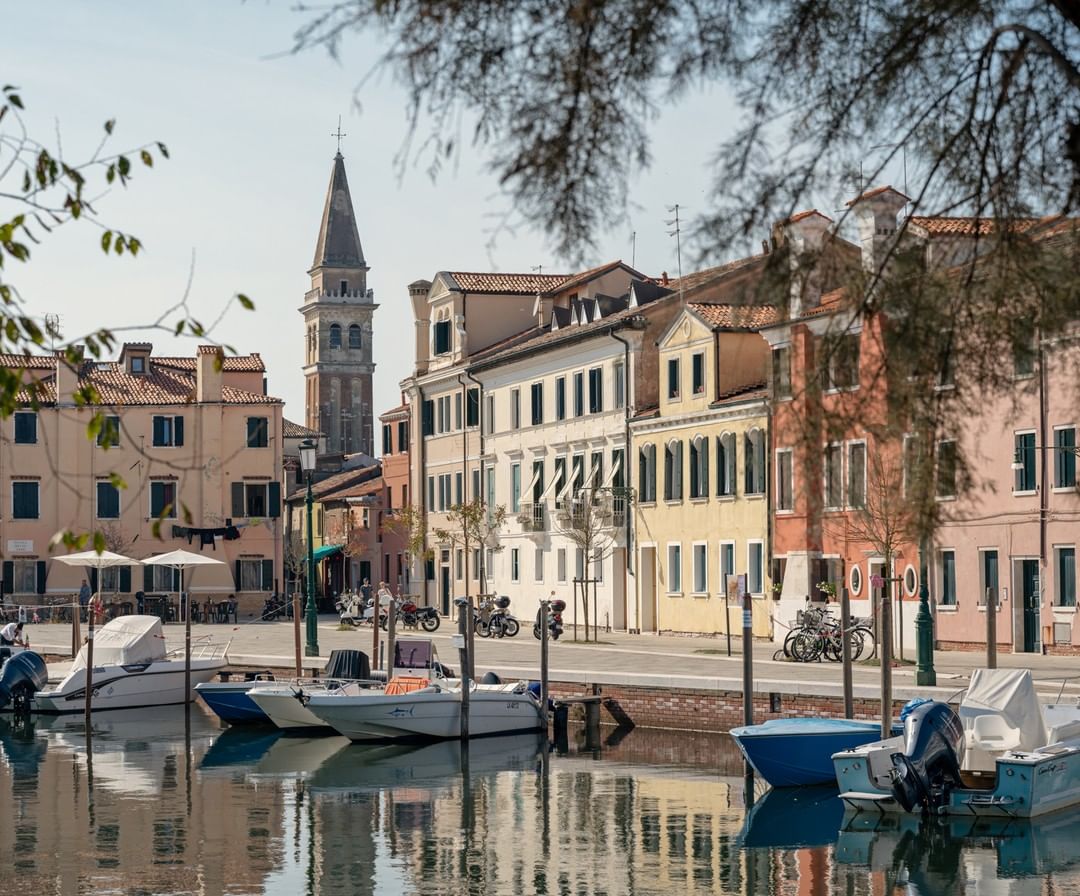
The historic village of Malamocco
Photo: Consorzio Venezia e il suo Lido
Itinerary details
- Stage 1: Piazzale Santa Maria Elisabetta - Palazzo del Cinema - Hotel Excelsior
- Stage 2: Malamocco - Piazza Maggiore
- Stage 3: Alberoni – WWF Dune degli Alberoni Oasis
- Stage 4: Pellestrina - San Pietro in Volta - Small Museum of Southern Lagoon
- Stage 5: Murazzi - Ca' Roman nature reserve
- Arrival: Piazzale Santa Maria Elisabetta
- Sources
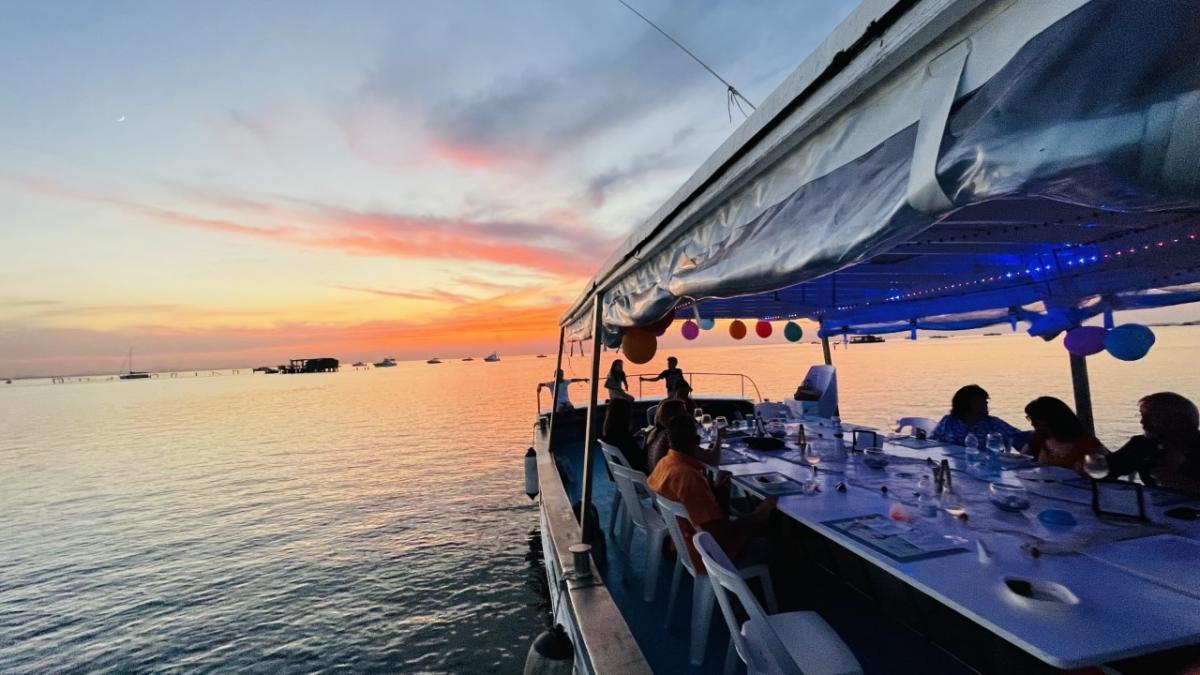
Fishing tourism excursion to Pellestrina
Photo: Massimiliano Busetto
Stage 1: Piazzale Santa Maria Elisabetta - Palazzo del Cinema - Hotel Excelsior
The starting point is Piazzale Santa Maria Elisabetta on the Lido, where the vaporetto stop is located.
Taking the Gran Viale Santa Maria Elisabetta, after passing via Lepanto, the Grande Albergo Ausonia & Hungaria stands out on the right in all its beauty. Inaugurated in 1907, it is an extraordinary example of Liberty architecture. The facade of this historic hotel is covered with polychrome majolica tiles with floral ornaments, a masterpiece by Luigi Fabris. The well-known ceramist intended for the building’s colors to recall the earth, water and sky.
Continuing along the Gran Viale, you will find yourself in front of the entrance to the Blue Moon bathing establishment. This beach, along with all the others on the island, has been awarded the Blue Flag for several years for the water quality and the level of services offered to tourists.
Take the cycle path on Lungomare Guglielmo Marconi, until you come to the monumental building of the Palazzo del Casinò, built in 1938. It is now used by the Venice Biennale during the Film Festival to host the press and some screenings. Next door is the Palazzo del Cinema, the main venue of the Mostra Internazionale d'Arte Cinematografica, which, every September, attracts the jet set from all over the world.
Continuing to pedal along the Lungomare Guglielmo Marconi, you can glimpse the sumptuous Hotel Excelsior, housed in an elegant Venetian palace embellished with Moorish-style details. Since the 1930s, many international stars have chosen to stay here during the Venice Film Festival.
Useful information:
- Bike-sharing: https://www.comune.venezia.it/it/bikesharing
- Cycle path of the Islands of Venice: https://www.veneto.eu/IT/Ciclovia_Isole_Venezia/
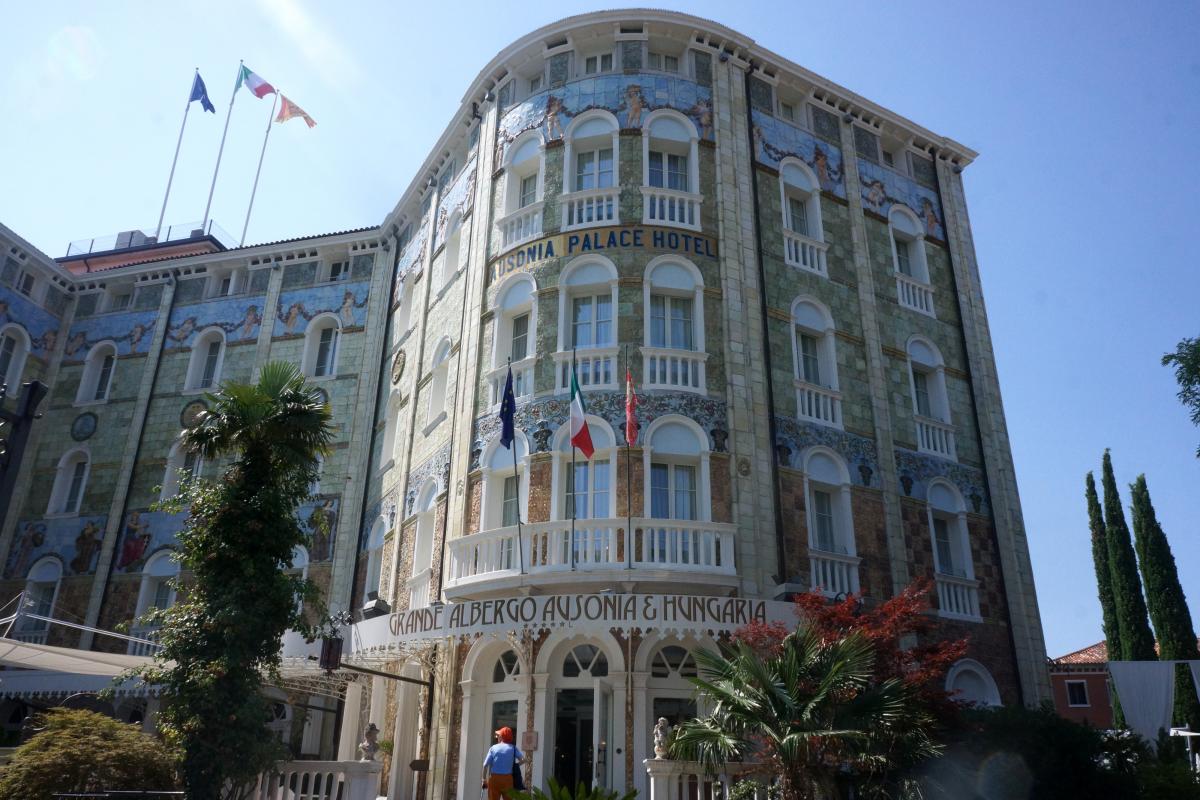
Grande Albergo Ausonia & Hungaria
Photo: Sara Biscaro - Comune di Venezia
Stage 2: Historic village of Malamocco – Piazza Maggiore
From the Palazzo del Cinema, still pedaling south along the seafront, you arrive in via Cristoforo Colombo, and continue to the roundabout. From here, take via Sandro Gallo, then via Malamocco, a stretch of the E5 cycle path of the Islands of Venice.
After you cross the bridge that leads to Riva Giovanni Diacono, a terrace opens up on the right. You can stop there for a few moments to enjoy the beautiful view of Poveglia, an island that is now uninhabited.
The story behind this island in the lagoon is truly singular. Over the centuries, from a thriving inhabited center it became a hospital, a place of quarantine for ships, and then a hospice, until it gained the reputation of an island haunted by ghosts.
A little further on, you find yourself at the gates of the ancient village of Malamocco, a sort of island within an island, entirely surrounded by a narrow canal and connected to the Lido only by bridges. The history of this village dates back thousands of years. Heir to one of the oldest lagoon centers, from the 8th to the 9th century it was the seat of the first Venetian doges. The designer Hugo Pratt, who had his studio here, fall in love with its characteristic streets, the colorful fishermen's houses and the small port. Several stories of his Corto Maltese, the comic book hero created in 1967, are set in Malamocco.
Leave your bicycle in piazzale Malamocco and walk to the vault of the ancient church of Santa Maria Assunta, which overlooks Piazza Maggiore and Piazza Erbe. Here, on the second Sunday of July each year, the Historical Procession is celebrated in honor of the Madonna di Marina. This tradition was born in the fourteenth century. According to legend, the image of the Virgin miraculously appeared from a trunk to the malamocchino Felice Dario while he was looking for wood on the beach.
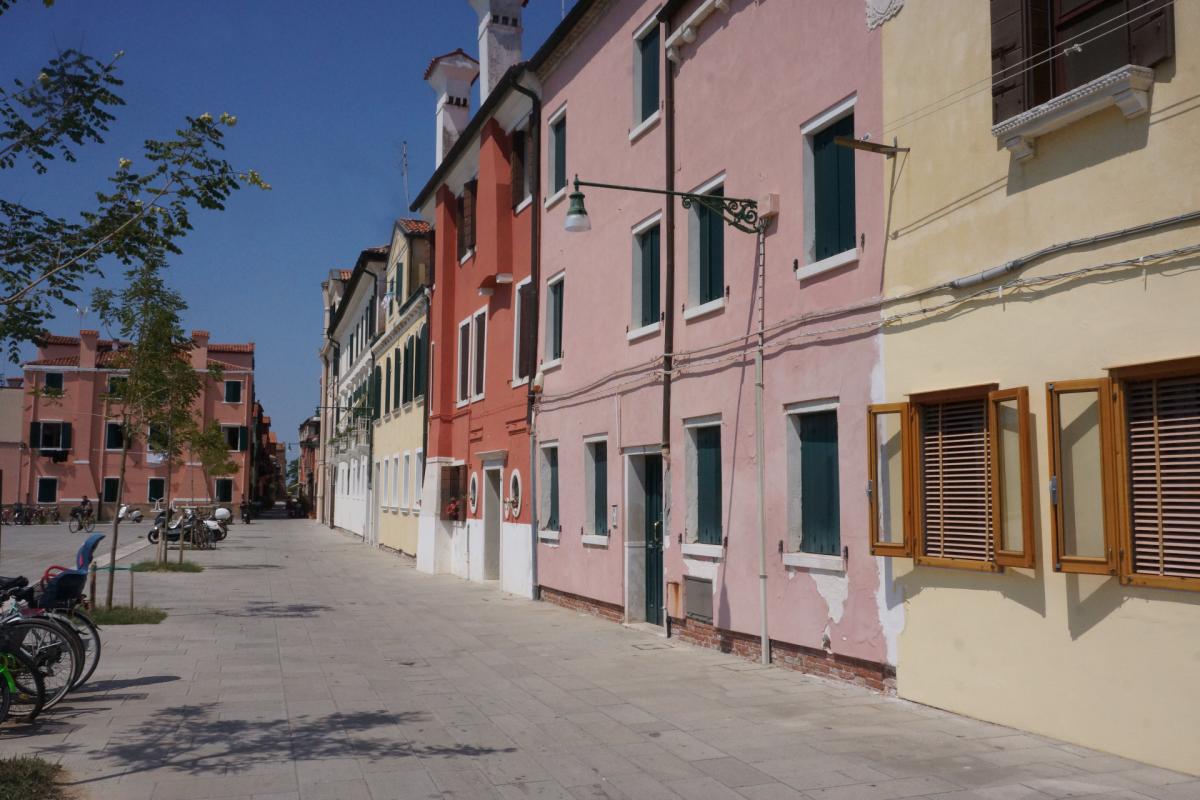
The historic village of Malamocco
Photo: Sara Biscaro - Comune di Venezia
Stage 3: Alberoni – WWF Oasis
After passing the village of Malamocco, skirt the lagoon as far as the southern end of the Lido, where Alberoni is located.
Here is the Circolo Golf Venezia, an area of over 100 hectares with maritime pines, willows, poplars and mulberry trees. In the early 1930s, Count Giuseppe Volpi di Misurata, then president of the Compagnia Italiana Grandi Alberghi, created the Venetian Club, among the oldest in Italy. It seems that the idea of building a golf course on the Lido came about to satisfy Henry Ford's desire to try his hand at the green during his stays on the island. The main entrance is located on the remains of Forte Alberoni, once one of the Serenissima’s main lagoon fortifications.
Another example of the Venice Lagoon’s defensive work can be found near Piazzale Alberoni; it is the Rocchetta Battery. The Austrians built the edifice, which cannot be visited, in the first half of the 19th century. The Italians then enlarged and modified it in its current form.
Following the path, you find yourself along the Strada dei Bagni which leads to the entrance to the Alberoni baths. On the right, just before the road ends, you can see the path that leads to the WWF Dune degli Alberoni Oasis.
The protected area, extending for about 160 hectares, can only be visited on foot. It encloses one of the largest and best preserved dune systems on the Upper Adriatic coasts, up to ten meters high, and a pine forest in which unique species of flora and fauna can be found. On the wide beach the plover still nests. This small bird has become a symbol of conservation of the beaches’ natural habitat in recent years; its presence is one of the indicators used by the FEE, the international body that assigns the Blue Flag to certify the coasts’ good environmental quality.
Among the rules of behavior to be observed inside the Oasis, it is important not to pass through the fratinos’ nesting areas. These are indicated by signs and delimited by fences. Dogs must be kept on a leash and umbrella and towels must be kept away from the breeding areas.
At the end of the visit, continue pedaling on the strada dei Bagni towards piazzale Alberoni, where the ferry embarks, first taking the strada della Droma and then via Strada Nova.
Along the way, the two Octagons Alberoni and San Pietro can be recognized among the lagoon waters. These ancient bastions were built to defend the Malamocco port mouth, an access of strategic importance since the times of the Serenissima.
Useful information:
- Circolo Golf Venezia: https://www.circologolfvenezia.it/il-circolo/la-storia/
- Forte Alberoni: https://www.mosevenezia.eu/wp-content/uploads/2018/12/QL1-Grigoletto.pdf
- WWF Dune degli Alberoni Oasis: https://www.dunealberoni.it/

The Rocchetta Battery
Photo: Comune di Venezia
Stage 4: Pellestrina - San Pietro in Volta - Small museum of the southern lagoon
Proceed towards the southern end of the Lido, returning to Alberoni, to embark on the ferry for the island of Pellestrina. Travel time is approximately 15 minutes. Tickets can also be purchased on board.
Once you get on the ferry, an enchanting paradise of water and silence opens up around you. On the left you can see the Rocchetta lighthouse, one of the few guarded lighthouses still existing in Italy. Its origins date back to the times of the Serenissima, although the current masonry construction dates back to 1879. Looking towards the lagoon, on the other hand, one can glimpse a tiny island, 160 square meters in all, which houses the Spignon lighthouse, long since abandoned. The lighthouse will soon be redeveloped as a space dedicated to tourism that respects the lagoon, a refuge where you can meditate surrounded by water.
As soon as you land in Pellestrina, you find yourself on an island that is a world of its own, outside of time. This island, waiting to be discovered, is famous for its lace, seafood specialties, traditional festivals and, last but not least, for the islanders' passion for rowing regattas. This is perfect refuge for those who want to escape from chaotic city life, breathe the sea air and have a chat with the islanders.
In Pellestrina, you can also experience the fisherman’s life, getting on board a fishing boat, like that of Massimiliano Busetto, a mussel farmer who organizes fishing tourism excursions with his family. This is not only a way to discover the secrets of the sea and the production of mussels but also to taste the organic mussels of the lagoon, cooked on board according to traditional recipes. The excursions start from Pellestrina, Chioggia or from Alberoni.
Also in the northern lagoon of Venice, around Burano and Torcello, fishing tourism experiences can be enjoyed in close contact with local fishermen. There are about 90 members, gathered in a cooperative based in Burano since 1896; today it is also a tourist info point. From April to October, but also at other times of the year, Buranelli fishermen accompany small groups of up to 12 people on their boats to discover traditional fishing in the sea and in the lagoon, from clams to moleca (soft-shelled) crabs.
Once disembarked at the Santa Maria del Mare terminal, the first inhabited center you encounter on the island of Pellestrina, continue on the Strada Comunale dei Murazzi for about 700 meters, then turn right and take a dirt path that runs alongside the lagoon. The panoramic view here is spectacular.
Continue pedaling until you reach the village of San Pietro in Volta, with the eighteenth-century church surrounded by colored houses. To explore the inhabited center’s streets, dismount from the bike and move it by hand, to avoid a fine and the disappointment of the inhabitants, who are very keen on respecting the peace and safety in their historic centers.
Next, continue along the cycle path that runs along the lagoon and, once you have passed the Church of San Pietro Apostolo, after about 350 meters, you will find the Small Museum of the Southern Lagoon on the left (visits by reservation). The museum traces the centuries-old history of the sea defense work conducted by the Serenissima, and recounts the devastating flood of November 4, 1966, when the sea broke the Murazzi dam in several points, bursting into the lagoon.
Continuing along the road, you arrive in Portosecco. The heart of the village reveals a small neoclassical church, dedicated to Santo Stefano, which dates back to the early seventeenth century.
Continue pedaling towards the south for about twenty minutes, until you arrive near the Pellestrina cemetery. From here, you can reach the sea in an instant. This is the time to soak up the sun on the island's pristine beaches and dive into its crystal clear waters.
Useful information:
- Alberoni Lighthouse: https://www.visitlido.it/luoghi/faro-alberoni/
- Pianeta mare fishing tourism excursions: https://pescaturismopianetamare.it/
- Burano fishing tourism excursions: https://pescaturismoburano.it/
- Small Museum of the Southern Lagoon: https://www.museopellestrina.it/
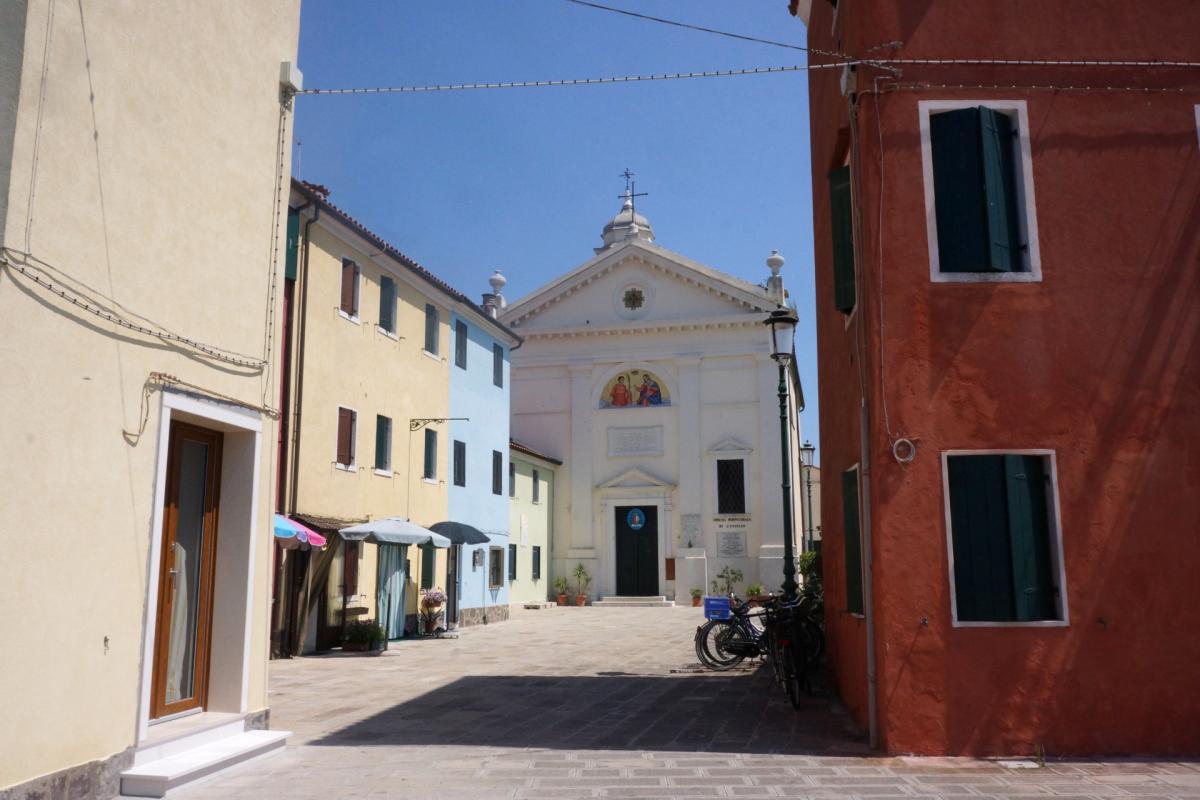
The Church of Santo Stefano in Portosecco
Photo: Sara Biscaro - Comune di Venezia
Stage 5: Murazzi and Ca' Roman Nature Reserve
Arriving in front of the entrance to the Pellestrina cemetery, take the Strada Comunale dei Murazzi on the right. This dirt path runs alongside the lagoon and continues along the Murazzi dam up to the Ca' Roman nature reserve. Along this section, bicycle transit is prohibited. It is advisable for safety reasons to take them by hand up to the entrance to the nature reserve.
The Murazzi are massive embankment walls, four meters high, erected in the eighteenth century by the Republic of Venice to protect the coast from storm surges. The most evocative stretch of this long fortification is the walk from the Pellestrina cemetery to Ca' Roman. Here, only the dam separates the sea and the lagoon, and you walk suspended between the blue-green water and the white stone. In the three rooms of the Small Museum of the South Lagoon in San Pietro in Volta, the story is told of the Murazzi and the flood of November 4, 1966. This was one of the most serious moments for the island of Pellestrina, when the dam’s stone blocks gave way under the sea’s fury.
Following the entire walk along the Murazzi, you will find yourself at the entrance to the Ca' Roman nature reserve. This is an ideal destination for birdwatchers and nature photographers. The entire protected area, managed by LIPU, can be visited on foot along paths with information panels. To protect its extraordinary natural habitat, the reserve is not accessible by bicycle.
The reserve of Ca' Roman is located along one of Italy’s most important bird migration routes. During spring and autumn, it becomes a resting place for many species of birds. The fratino and the little tern also nest on its beaches. The reserve is also an area of historical interest due to the Forte Barbarigo and the Austrian bunkers, used until the Second World War.
Useful information:
- The Murazzi: https://www.visitlido.it/luoghi/murazzi/
- Ca' Roman nature reserve: http://www.lipu.it/oasi-naturale-ca-roman
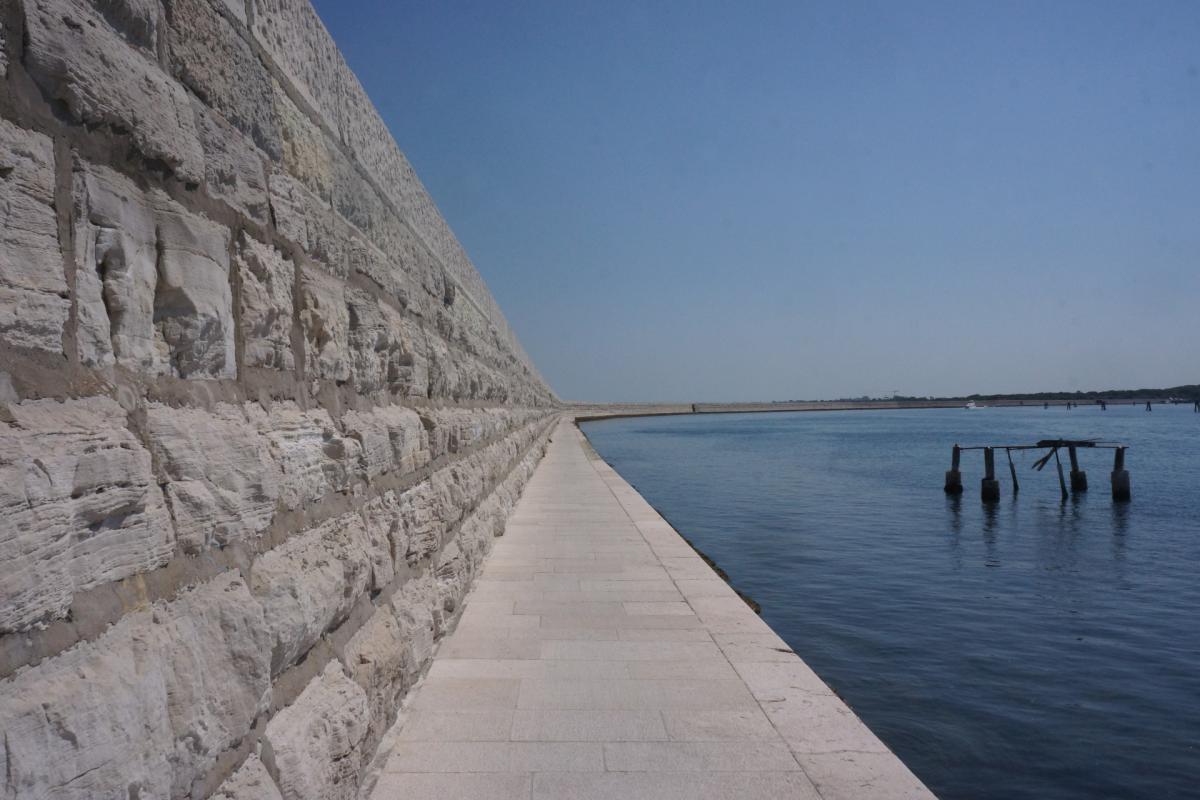
The Walls of Pellestrina
Photo: Sara Biscaro - Comune di Venezia
Arrival: Piazzale Santa Maria Elisabetta
From Ca' Roman, the route is reversed to the starting point, Piazzale Santa Maria Elisabetta on the Lido.
Piazzale Santa Maria Elisabetta
Photo: Sara Biscaro - Comune di Venezia
Sources
- www.veneto.eu/IT/Ciclovia_Isole_Venezia
- www.visitlido.it
- www.dunealberoni.it
- www.lipu.it/oasi-naturale-ca-roman
- muoversi.venezia.it
- Lido island among art, nature, sea and lagoon
- From Lido to Pellestrina. Slow tour among wild beaches and crystal blue sea
- Pellestrina, A hidden corner of the lagoon
- The Lido, for Liberty-style gardens and natural oases
-
Venezia Bike Experience - Lido and Pellestrina



